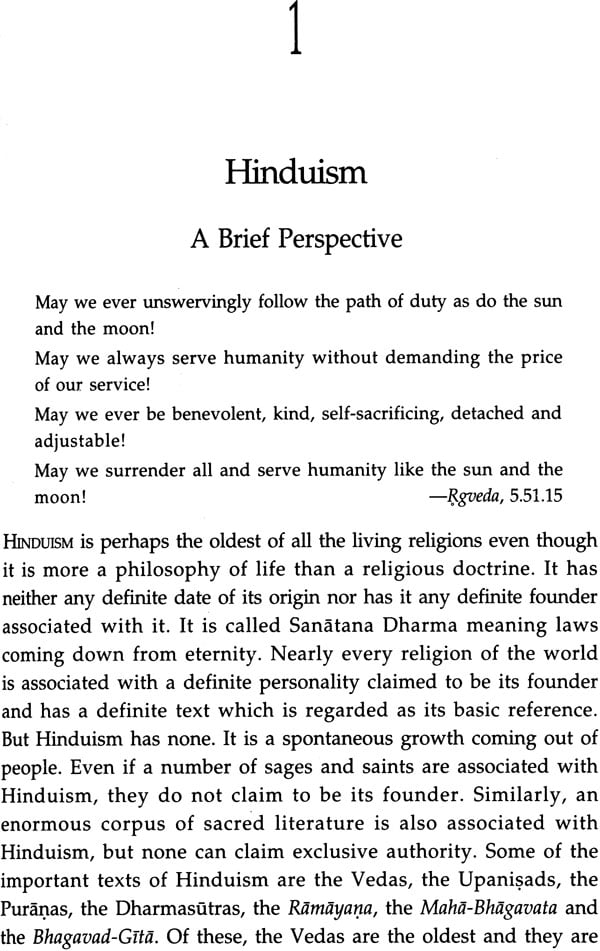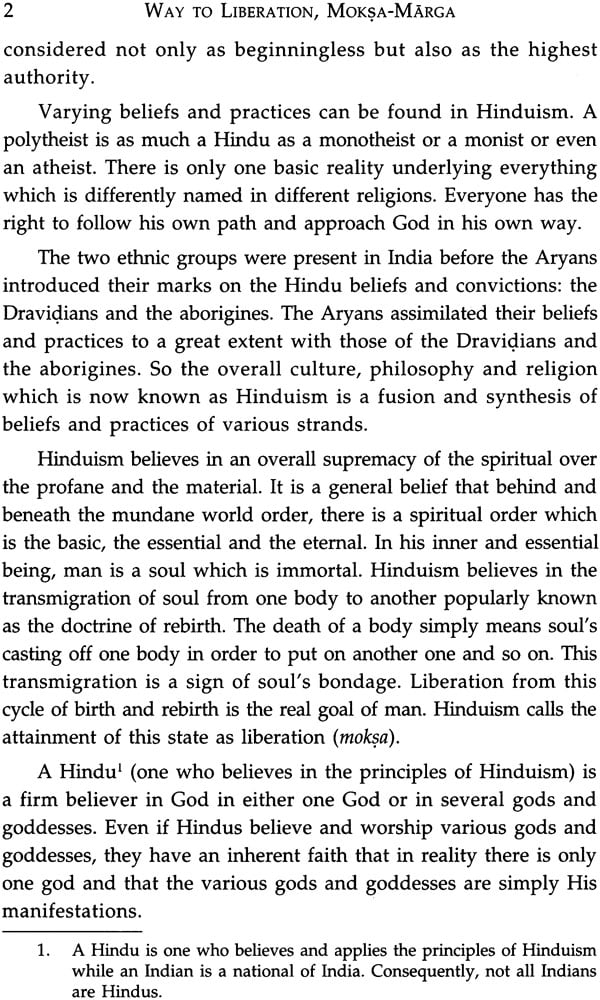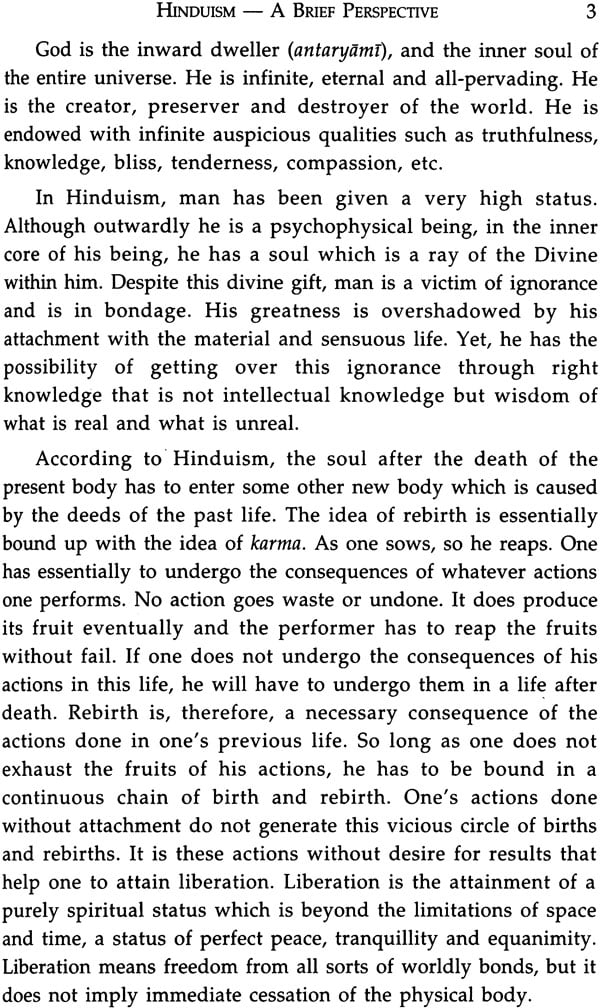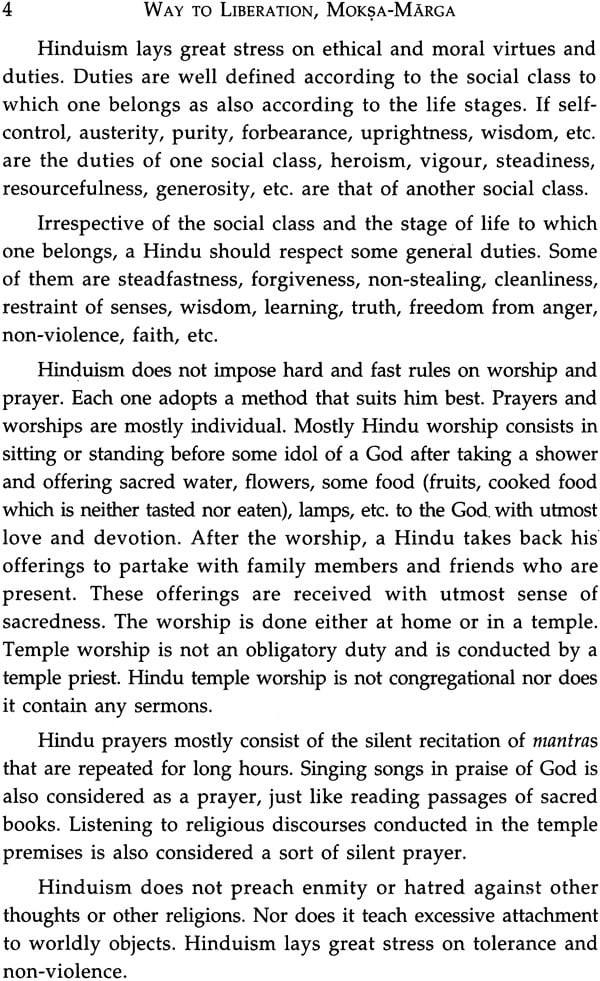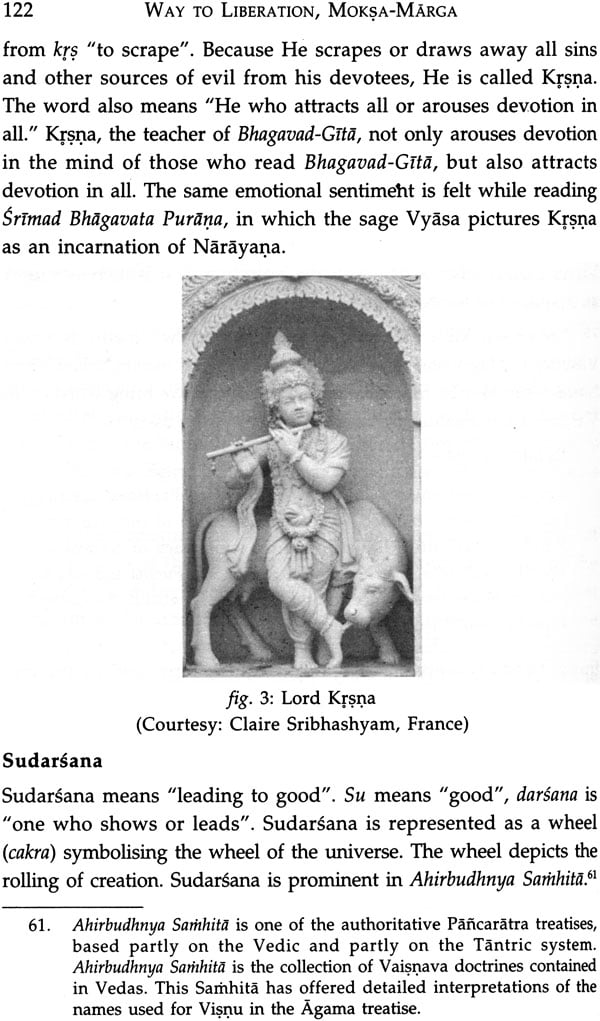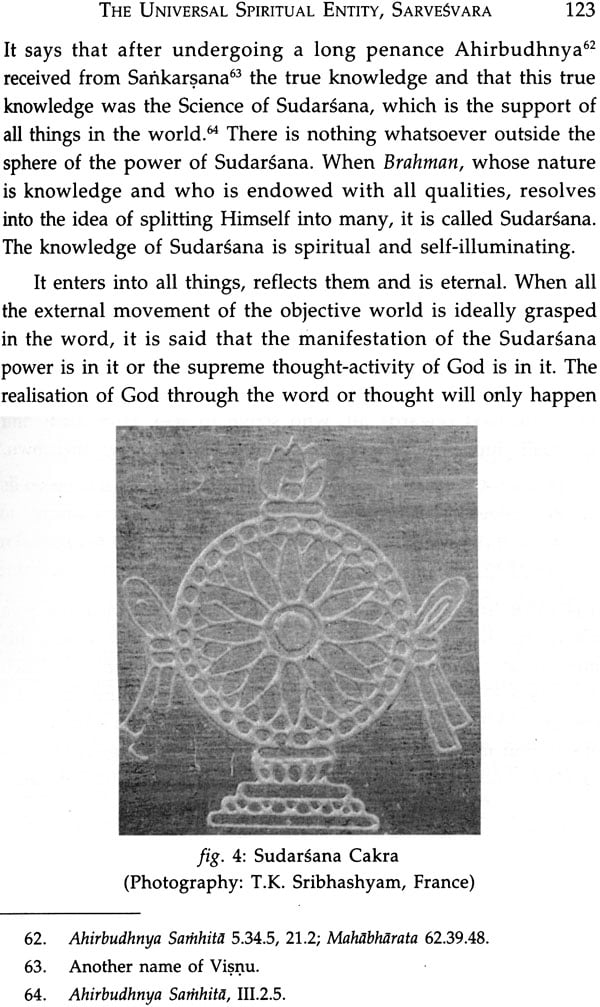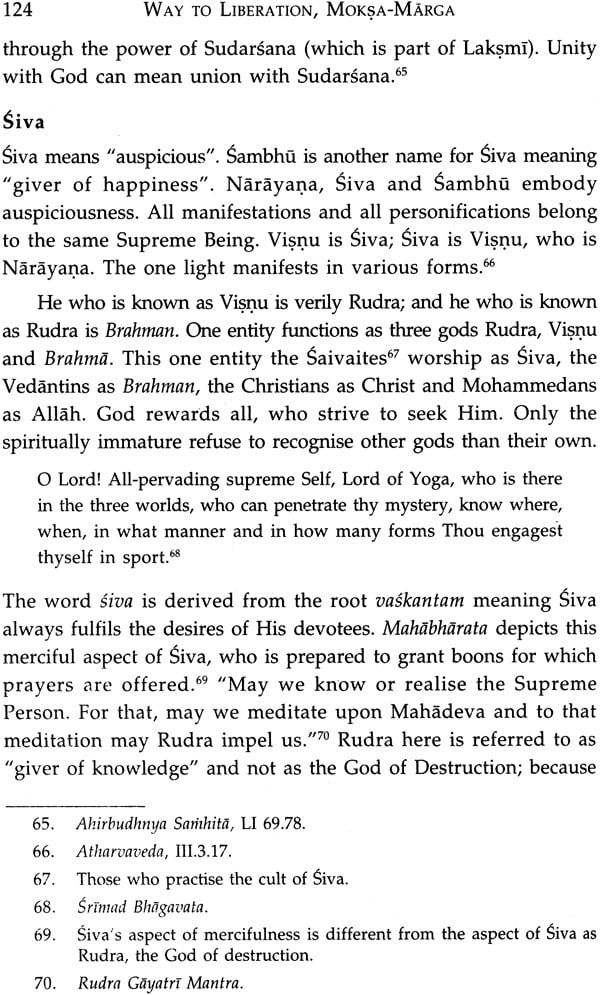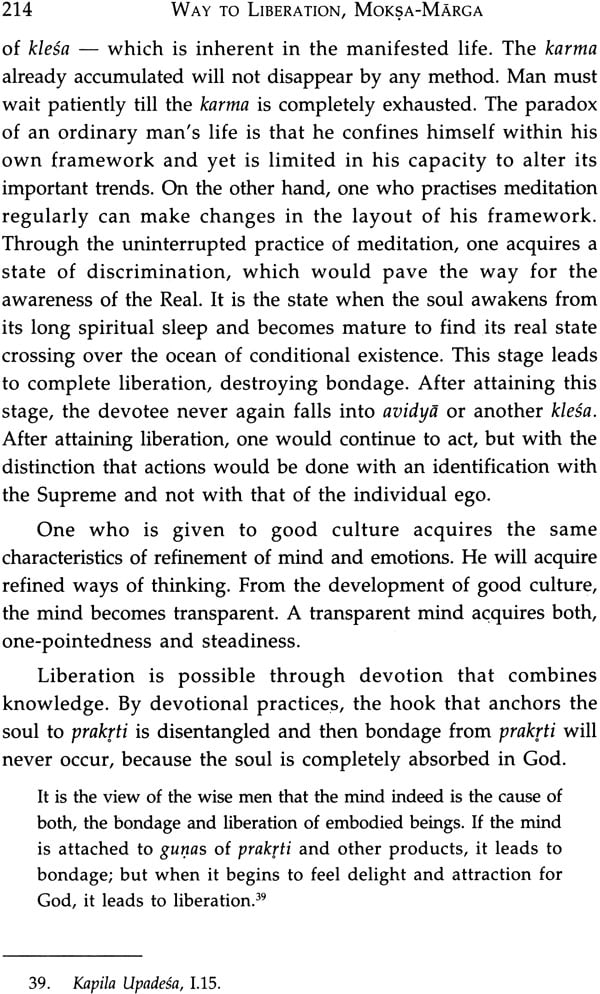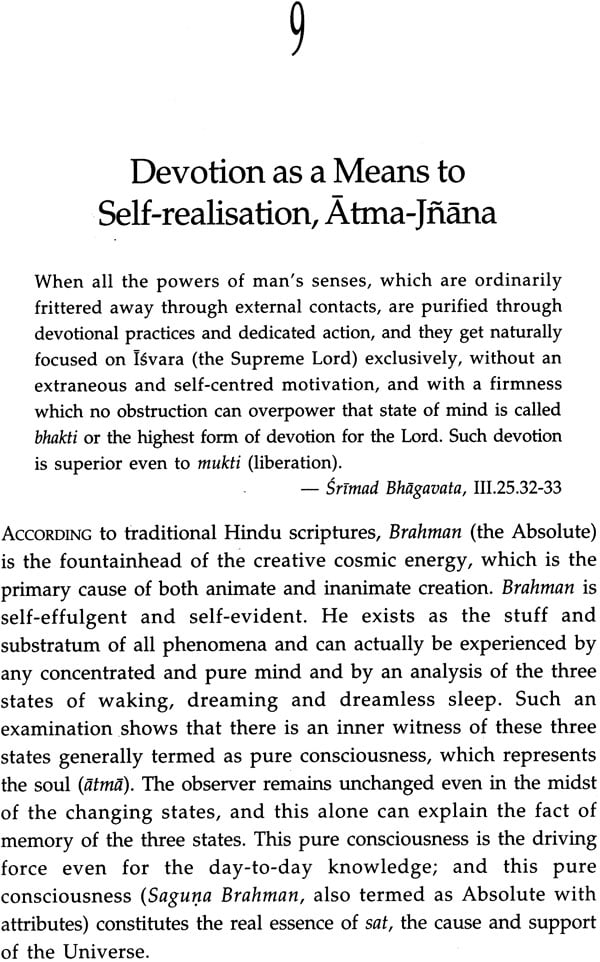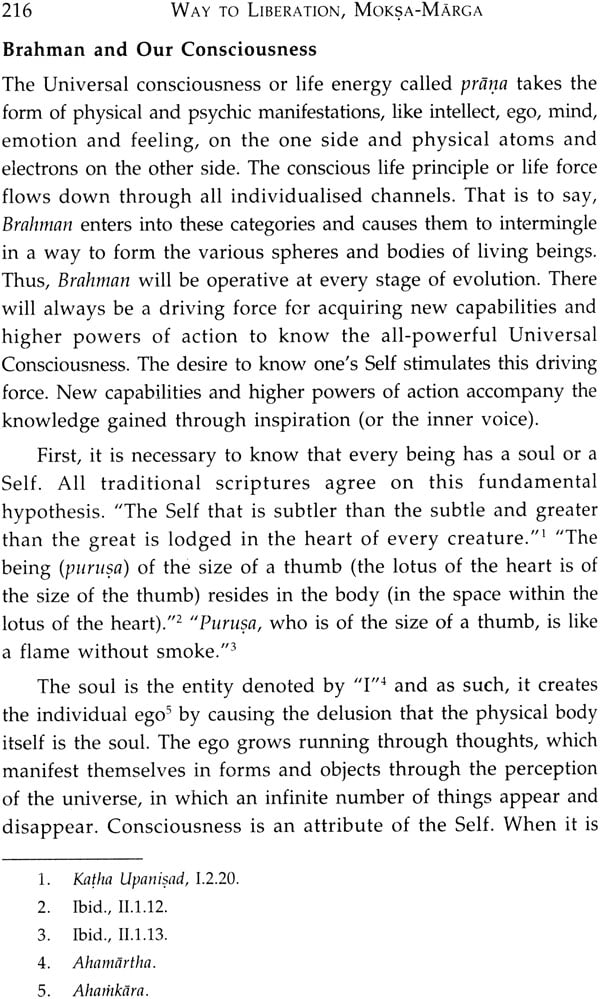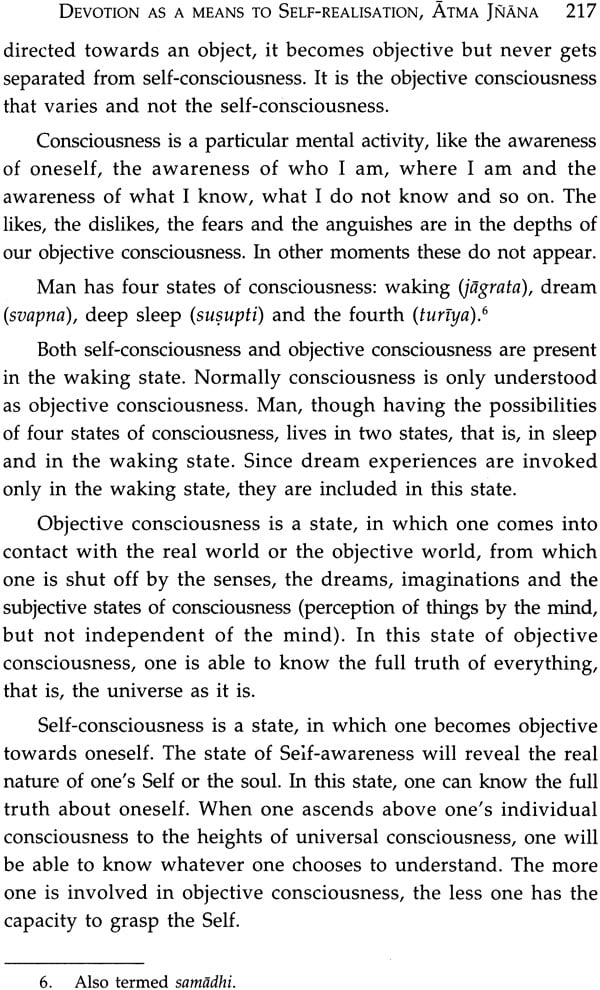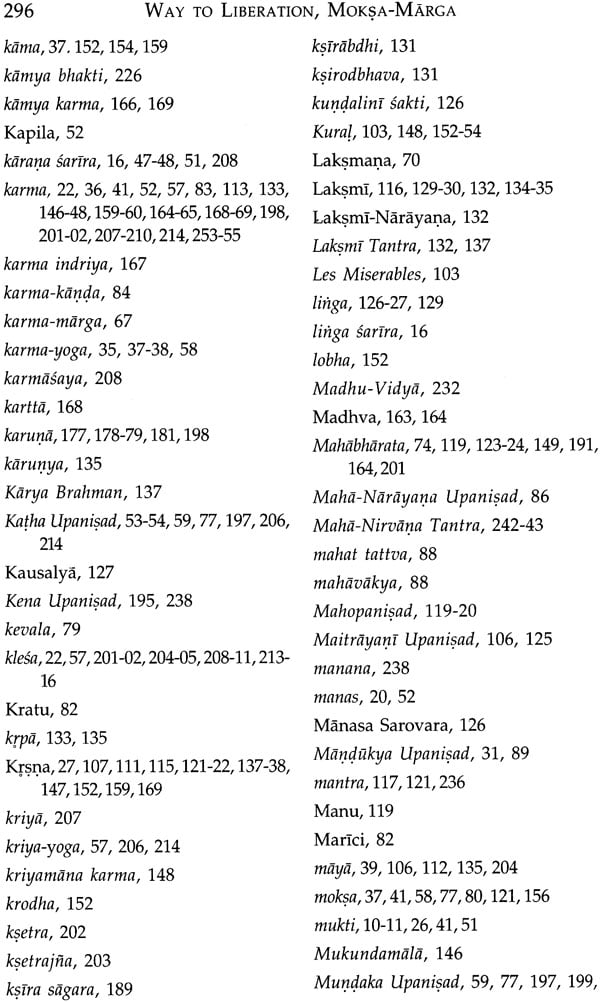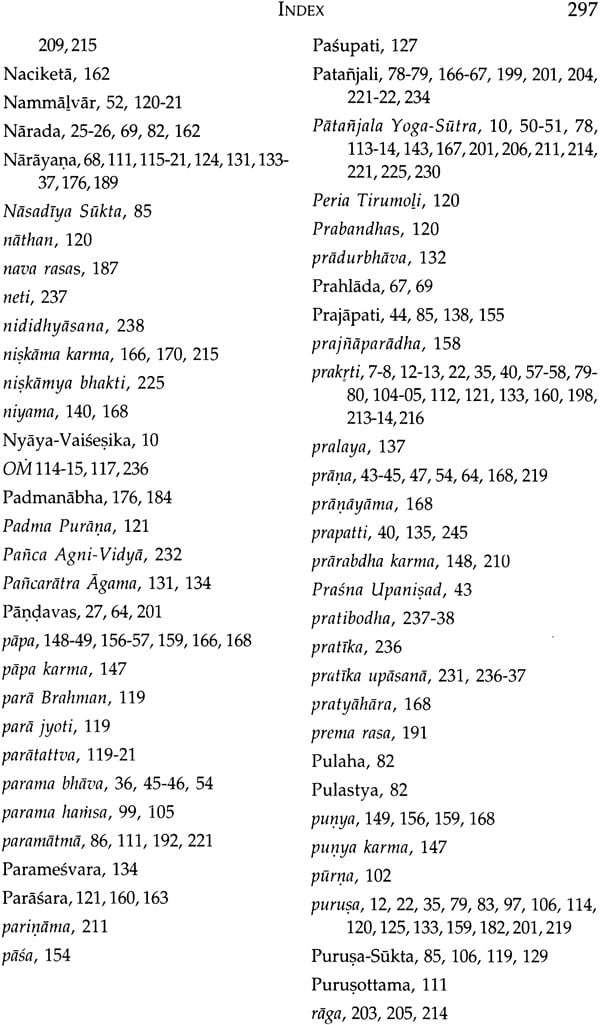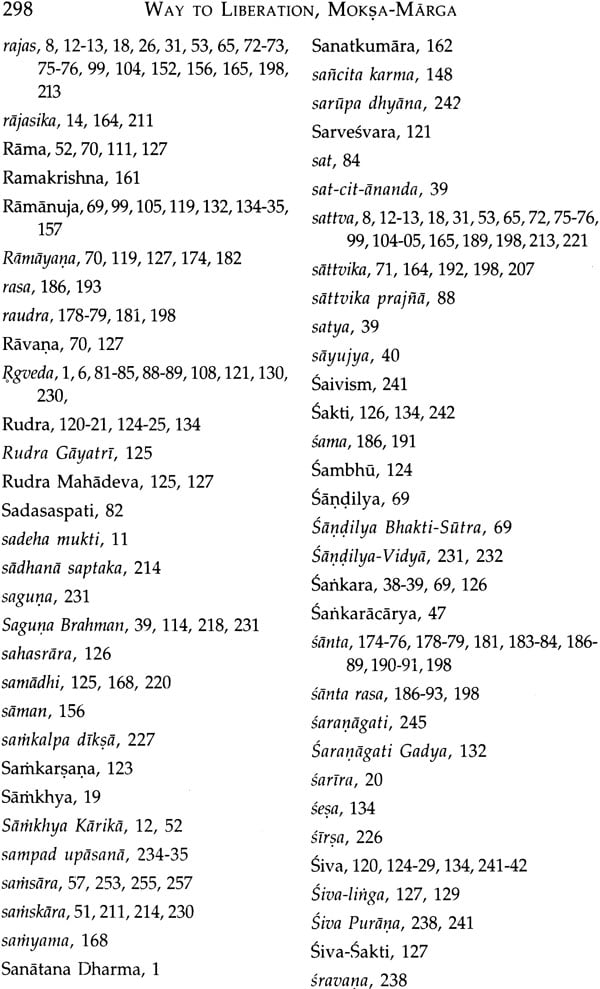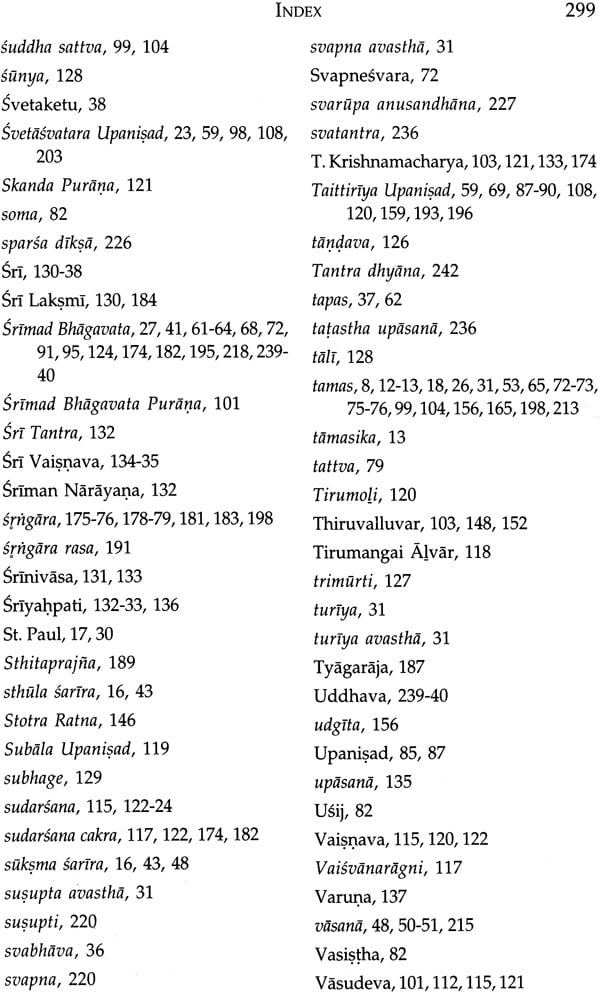
Way of Liberation Moksa Marga (An Itinerary In Indian Philosophy)
Book Specification
| Item Code: | NAD955 |
| Author: | T. K. Sribhashyam& Alamelu Sheshadri |
| Publisher: | D. K. Printworld Pvt. Ltd. |
| Language: | English |
| Edition: | 2011 |
| ISBN: | 9788124605998 |
| Pages: | 322 (3 Color Illustrations) |
| Cover: | Paperback |
| Other Details | 8.5 inch X 5.5 inch |
| Weight | 440 gm |
Book Description
The way to liberation or moksa needs perfect knowledge, perfect action and perfect surrender to the Lord. The bhakta becomes a bhagavata as he not only knows and sees but also lives as a servant of God. Moksa is the final approach to the purity and perfection of the human soul. This volume attempts an in-depth study of the concept of liberation or moksa and the way to attain it.
The book begins with the meaning of love, devotion, religion, the body-soul relation and the three yogas, an understanding of which is essential to understand the concept of moksa. In this context, it delves into the meaning of the Brahman, the Absolute, as conveyed in the Vedas and other religious works like the Upanisads and the Bhagavad-Gita, the concept of the universal spiritual entity of Sarvegvara, concepts of sin and virtue, and even the principles of monotheism and polytheism in Hinduism. Quoting from the scriptures and other relevant texts, it emphasises on the notion of devotion and its benefits to examine the means to self-realisation and liberation and includes a study of the concept of contemplation and meditation, including meditation techniques and practices, which is central to the attainment of moksa.
With interesting illustrations, the volume will be useful to religious scholars and students and seekers on the path of spiritual fulfillment.
Mr. T.K. Sribhashyam, son of Shri T. Krishnamacharya, obtained his Master’s degree in accountancy as well as in Hindu philosophy. He also received intensive lessons on yoga philosophy, and Indian psychology. He is the Head of all Yogakshemam schools in Europe. Two of his books in English viz. Blissful Experience, Bhakti — Quintessence of Indian Philosophy and From Devotion to Total Surrender, Shanagati Yoga —In the Light of Indian Philosophy are appearing from India in 2012.
Mrs. Alamelu Sheshadri, second daughter of Shri T. Krishnamacharya, is graduated from Mysore University. Shri T. Knishnamacharya initiated her to Yajurveda, taught her all major Upanisads, Brahmasutras and the Bhagavad-Gita in the traditional way. He also trained her in yoga, both practically and philosophically. From 1985 until 1989 she continued studying many philosophical subjects, especially Visistadvaita.
Mind is like the wandering moon. There are always fluctuations in the emotional conditions. This is natural in all living beings. However, man is capable of stabilising his emotional agitations by personal efforts through various methods. The easiest and successful way is to make sincere appeal to God with love. This type of emotional loving approach to God is bhakti (devotion). Bhakti is supreme love to God. Love springs from God and enters into the human heart. The abundant treasure of God’s love is hidden in the human heart. That is to say, the human heart is overflowing with God’s love. Man has only to realise this wealth of God’s love in him and feel its richness. God shelters man from the scorching miseries of life, when man clings to God. Loving shelter from God is the reward of bhakti practice.
Showering a brilliant light amid gloomy darkness, radiating the sweet fragrance of life, bringing reconciliation to all contradictions are (some of) the gifts of bhakti, in spite of innumerable contradicting views. Bhakti is the golden bridge which links man on earth to the divine paradise. To train the mind for divinity, there is no road equal to devotion, bhakti. Words fail to bring out the pleasure of devotional practices (bhakti sadhana).
Complete trust in God is capable of making man remain unconcerned to the problems of life, as they just pass off by themselves by God’s grace.
Only a man who knows the place can tell the right direction to reach it. Our father, Sri T. Krishnamacharya of Mysore, infused bhakti in his children and in his disciples right from the beginning. God’s blessings and our father’s sailing grace helped us to move on in this writing.
In the name of God, this work is dedicated to our father — our guru, with profound respect and gratitude.
In a work on bhakti, it is unavoidable to use Sanskrit terms. The use of such terms is minimised and the nearest English equivalent is provided. An exhaustive glossary is appended. This work does fall short of the degree of excellence that might be attained.
We offer our deep gratitude to Cornelia Heyde from Germany for the sincere interest she has taken in our writings, going through the major part of this work, offering useful and valuable comments and thus helping in the completion of the work.
We owe our sincere thanks to all our well-wishers who helped us in one way or the other to make this book come to light. Above all, there is the grace of God.
| Genealogy | IX | |
| Benediction by Sri B.K.S Iyengar | XI | |
| Preface | XIII | |
| Presentation | XV | |
| List of Tables and Figures | XVII | |
| 1 | Hinduism - A Brief Perspective | |
| 2 | Introduction | 5 |
| What is love for man | 5 | |
| What is love that can never be measured | 5 | |
| The impermsnency of human love | 11 | |
| Two ultimate aims in man | 14 | |
| Body soul ralations | 19 | |
| Attachment to and Detachment from the body | 21 | |
| What is devotion | 24 | |
| What is religion | 28 | |
| The cultivation of ddevotion without religion | 32 | |
| The threee yogas | 37 | |
| 3 | Concept OfLieration (Moksa) | 41 |
| Views on soul and liberation | 51 | |
| Means to liberation | 55 | |
| Karma and liberation | 56 | |
| Liberation as the aim of devotion | 57 | |
| Devotion and liberation | 63 | |
| Liberation: Yoga and smkhya view | 77 | |
| 4 | Brahman, the absolute | 81 |
| Brahman in the Vedas | 84 | |
| BrahmanBrahamn in the Upanisads | 85 | |
| Brahmn in Bhagavad-Gita | 91 | |
| Brahman, the Unmanifest | 94 | |
| 5 | The Universal Spiritual Entity, Sarvesvara | 95 |
| Concept of the Universal Spiritual Entity | 96 | |
| Attributes of the Universal Spiritual,God | 106 | |
| Concept of Hirayagarbha(the Golden Egg) | 137 | |
| Jesus as God, Guru and Saints | 137 | |
| Conception of a religion-free God | 138 | |
| Concept of Sin and Virtue | 145 | |
| Concept of Karma | 145 | |
| Concept of sin | 148 | |
| The Universal Spiritual Entity is not the Judge of our sin | 157 | |
| Role of sin and vice | 164 | |
| 7 | Peaceful Emotion, Santa Rasa | 172 |
| Birth of Human Emotions | 172 | |
| Peaceful Emotion, Santa Rasa | 184 | |
| Sana Rasa and Bhakti | 187 | |
| 8 | Benefits of Devotion | 193 |
| Introduction | 193 | |
| Devotion Reduces the Consequences of the Activites of other Emotions | 195 | |
| Realisation Reduces the Consequences of Klesa and Karma | 199 | |
| 9 | Devotion as a Means to Self-Realisation,Atma-Jnana | 215 |
| Brahman and our Consciousness | 216 | |
| Self-realisation | 218 | |
| 10 | Meditation Techniques in Hinduism | 227 |
| Upasana, vidya | 228 | |
| Subjective Meditation Techniques | 234 | |
| Meditaion in the Puranas | 235 | |
| Meditation in Vaisnavism | 237 | |
| Meditation in Saivism | 238 | |
| Meditation in Tantra, Tantradhyana | 239 | |
| 11 | Practical Exercises in Contemplation and Meditation | 241 |
| Five steps to Meditation | 245 | |
| Preparatory Practices | 247 | |
| Contemplation | 249 | |
| Meditatiin | 257 | |
| Vision of the Ultimate | 262 | |
| Dedication of Meditation | 262 | |
| Glossary | 265 | |
| Bibliography | 286 | |
| Index | 293 |
